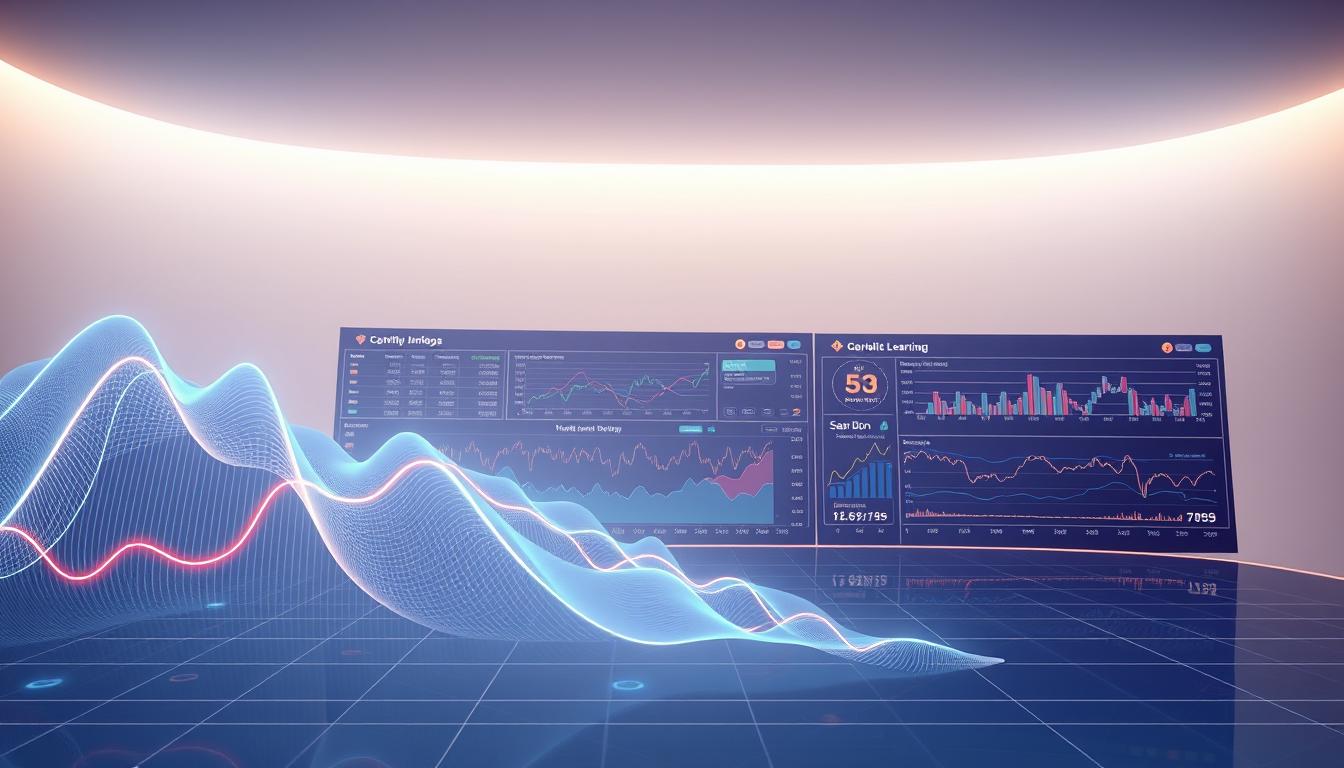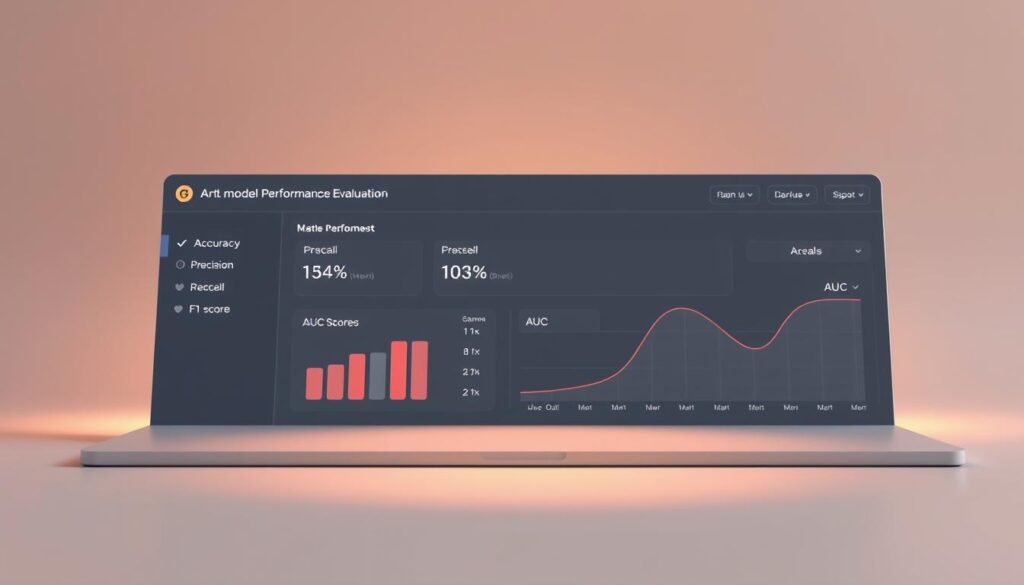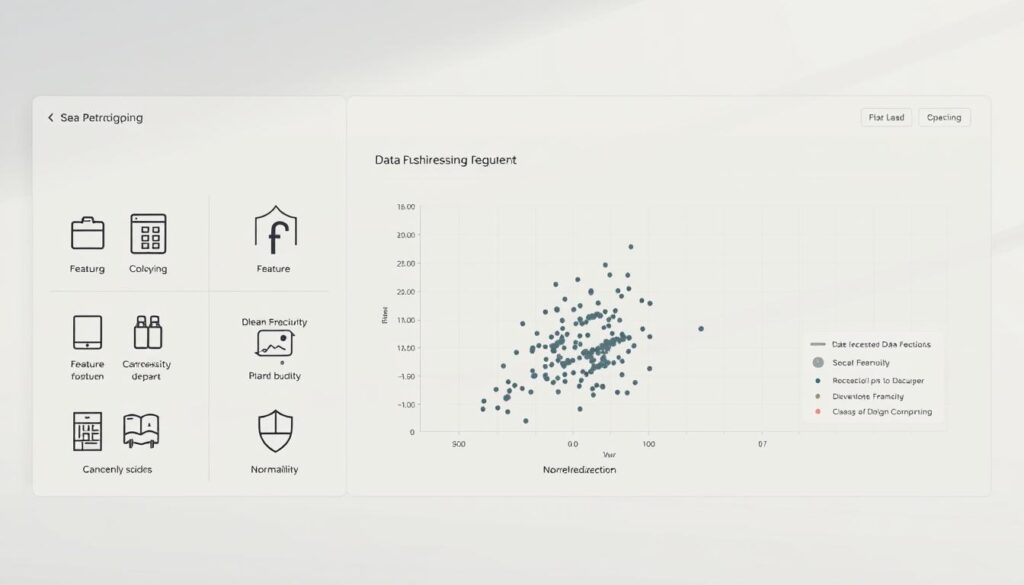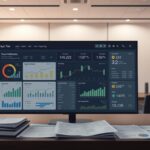Now Reading: Machine Learning Cryptocurrency Market Analysis Explained
- 01
Machine Learning Cryptocurrency Market Analysis Explained
Machine Learning Cryptocurrency Market Analysis Explained

The digital finance landscape has transformed dramatically with the arrival of advanced computational techniques. These powerful tools process enormous datasets to uncover patterns that human analysts might miss.
This comprehensive research examines forty-one different algorithmic approaches for forecasting Bitcoin values. The study covers both classification and regression methods, testing their effectiveness across various trading conditions.
The decentralized nature of digital assets creates unique challenges that traditional financial assessment cannot adequately handle. This volatility presents both risks and opportunities for strategic investment approaches.
Evaluation methods include technical performance measurements alongside practical trading indicators. This dual approach ensures models are both mathematically sound and commercially viable.
For individual and institutional investors alike, these data-driven strategies offer new ways to navigate complex financial ecosystems. The research maintains scientific rigor while making complex concepts accessible to diverse audiences.
Key Takeaways
- Advanced computational methods are revolutionizing how we understand digital asset behavior
- The study evaluates 41 different algorithmic approaches for price forecasting
- Digital currencies present unique challenges that require specialized analytical techniques
- Evaluation combines mathematical accuracy with real-world trading performance
- Both retail and institutional investors can benefit from data-driven strategies
- The research maintains accessibility without sacrificing technical depth
- Comprehensive testing includes historical analysis and forward-looking scenarios
Introduction to Machine Learning in Cryptocurrency Markets
Digital currencies have fundamentally altered investment strategies, requiring new analytical approaches beyond traditional financial models. The integration of artificial intelligence systems represents a significant evolution in how we understand and participate in these dynamic markets.
These computational models process enormous datasets that include historical price movements, trading volumes, and sentiment indicators. They can identify complex patterns that human analysts might overlook in fast-moving environments.
The decentralized nature of digital assets creates unique volatility patterns that present both risks and opportunities. This environment demands sophisticated algorithms capable of adapting to rapid price fluctuations across global exchanges.
What was once exclusive to institutional investors has become increasingly accessible to retail traders. Modern machine learning tools now empower a wider audience to leverage data-driven strategies for cryptocurrency trading.
This foundation prepares readers for deeper exploration of specific techniques and applications. Understanding these basic concepts is essential for grasping the advanced methodologies discussed in subsequent sections.
Understanding Cryptocurrency Market Trends Using Machine Learning
Sophisticated computational approaches are reshaping how we interpret digital asset price movements. These systems process multiple information streams to identify emerging patterns that human analysis might miss.
Price fluctuations respond to diverse influences including regulatory changes, social media sentiment, and economic developments. Traditional forecasting methods struggle with these non-linear relationships.
Advanced algorithms excel at detecting cyclical behaviors and momentum shifts across different digital assets. They can spot correlation structures that indicate broader market movements.
These predictive systems synthesize historical price information, trading volumes, and sentiment indicators. This comprehensive data integration enables more accurate trend identification.
Different computational approaches suit various time horizons—from short-term price forecasts to longer-term trend analysis. Accurate pattern recognition forms the foundation for developing effective trading strategies in volatile environments.
The ability to process real-time information gives these systems a significant advantage over conventional technical analysis. This capability allows traders to respond more effectively to rapidly changing conditions.
Machine learning cryptocurrency market analysis: Key Concepts
The foundation of algorithmic forecasting in digital finance rests on two primary learning methodologies. Supervised approaches use labeled datasets with known outcomes to train predictive systems.
These systems excel at tasks like classification and regression. Classification predicts directional movements, while regression forecasts precise price levels.
Unsupervised techniques explore unlabeled information to discover hidden structures. They identify clusters and anomalies that might signal emerging opportunities.
The research employed a rigorous data segmentation strategy. Training used ten years of historical information, while backtesting and forward testing validated performance.
| Learning Approach | Data Type | Primary Applications | Key Techniques |
|---|---|---|---|
| Supervised | Labeled datasets | Price prediction, trend classification | Regression, decision trees, neural networks |
| Unsupervised | Unlabeled information | Pattern discovery, anomaly detection | Clustering, dimensionality reduction |
| Feature Engineering | Processed variables | Model optimization | Variable selection, transformation |
Feature engineering plays a critical role in model performance. Selecting and transforming input variables significantly impacts prediction accuracy.
Proper data segmentation prevents overfitting and ensures generalization. This approach maintains robust performance across different market conditions.
Historical Overview and Data-Driven Insights
The relatively brief but explosive history of Bitcoin and other digital assets offers unique challenges for data-driven approaches. These digital instruments emerged from technological experiments into globally traded assets within just over a decade.

This rapid transformation created distinct market cycles that are essential for training effective predictive systems. Major price movements and regulatory shifts have shaped the landscape significantly.
Evolution of Cryptocurrencies and Market Dynamics
Beginning with Bitcoin’s 2009 launch, digital currencies progressed through several distinct phases. Early adoption was limited to technology enthusiasts before broader recognition emerged.
The space experienced dramatic boom-and-bust cycles that tested early investors. These patterns now provide valuable training information for computational systems.
Data Collection and Historical Price Analysis
Gathering comprehensive historical information presents particular difficulties in decentralized environments. Multiple exchange sources must be consolidated for accurate representation.
The study utilized ten years of Bitcoin pricing information spanning 2013-2023. This extensive timeframe captures diverse market behaviors essential for robust model development.
Proper data quality ensures predictive systems can recognize patterns across different conditions. Historical events like regulatory changes and technological upgrades are captured within these datasets.
Role of Neural Networks and Learning Algorithms
Advanced neural architectures have emerged as powerful tools for decoding intricate price movements in volatile digital environments. These sophisticated systems process sequential financial data with remarkable precision.
Deep Learning Models in Trading
Recurrent neural networks, particularly Long Short-Term Memory (LSTM) variants, excel at handling time-series information. Their architecture captures long-term dependencies in sequential data.
Convolutional neural networks, originally designed for image recognition, adapt well to financial chart analysis. They treat price patterns as visual data for pattern detection.
Deep learning structures stack multiple layers to extract progressively abstract features. This enables more accurate forecasting of complex price behaviors.
Applications of Neural Networks in Prediction
Research demonstrates LSTM models outperform traditional generalized regression networks in price forecasting. Lahmiri and Bekiros confirmed this superior performance through comparative studies.
Innovative combinations, such as LSTM with empirical wavelet transform, further enhance prediction accuracy. Altan and colleagues showed this approach improves digital currency price forecasts.
Jiang and Liang developed CNN-based systems that successfully predict Bitcoin values using historical data. These applications demonstrate the practical value of neural architectures in financial environments.
Incorporating Sentiment Analysis in Trading Models
The emotional pulse of online communities now plays a crucial role in determining price directions for decentralized assets. Modern approaches systematically measure collective investor psychology through advanced computational methods.

This methodology captures psychological dimensions that traditional technical indicators often miss. By quantifying public mood, traders gain insights into potential price shifts.
Social Media and News Sentiment Impact
Platforms like Santiment and LunarCrush demonstrate how social discussions correlate with asset behavior. Their analytics reveal measurable connections between online mood and subsequent valuation changes.
Retail investor influence makes these emotional drivers particularly significant in digital finance. Viral information spreads rapidly through networks, creating immediate trading opportunities.
Utilizing NLP Techniques for Market Insights
Natural language processing systems scan vast text sources including forums, blogs, and news outlets. These tools classify content as positive, negative, or neutral toward specific assets.
Research by Sohangir et al. confirmed that convolutional neural networks achieve superior performance in sentiment classification. This approach improves prediction accuracy by capturing hidden emotional factors.
Combining sentiment data with traditional methods creates more robust forecasting systems. This integration accounts for both rational calculations and psychological market forces.
Risk Assessment and Volatility Using AI
Quantifying financial uncertainty has become a critical frontier in digital asset trading. Artificial intelligence systems now provide sophisticated tools for measuring and managing this inherent unpredictability.
These computational approaches excel at volatility prediction by analyzing historical patterns. They process massive datasets containing price movements and trading volumes.
- Value at Risk (VaR) – estimates potential losses
- Conditional Value at Risk (CVaR) – measures tail risk
- Sharpe Ratio – evaluates risk-adjusted returns
Research demonstrates that certain algorithms outperform others in risk management. Random Forest and Stochastic Gradient Descent models show particular strength in handling turbulent conditions.
These systems enable dynamic position sizing based on anticipated market behavior. Traders can adjust exposure according to real-time risk assessments.
The digital finance landscape presents unique challenges for risk assessment. Sudden regulatory announcements and security breaches can cause unprecedented price swings.
Continuous model refinement ensures systems remain robust across different market regimes. Stress testing against extreme scenarios validates prediction accuracy during high volatility periods.
Algorithmic Trading Strategies Powered by Machine Learning
Automated trading systems have revolutionized how investors approach digital asset markets. These platforms execute trades based on sophisticated algorithms that analyze real-time data.
Popular services like 3Commas and Cryptohopper implement various approaches. They identify opportunities across different exchanges and execute trades automatically.
Backtesting and Forward Testing Techniques
Validation processes ensure strategy reliability before live implementation. Backtesting evaluates performance on historical data from February to July 2023.
Forward testing applies models to unseen data from August to October 2023. This confirms their ability to generalize beyond training periods.
| Trading Approach | Primary Mechanism | Risk Level | Suitable Conditions |
|---|---|---|---|
| Arbitrage | Exploits price differences | Low | Multiple exchange availability |
| Momentum | Follows established trends | Medium | Strong directional markets |
| Mean Reversion | Bets on price normalization | High | Volatile, range-bound conditions |
Ensemble methods combine multiple models for superior prediction accuracy. Research shows Random Forest and XGBoost deliver strong results.
Automation eliminates emotional biases and human errors. This consistency enhances profitability across different market conditions.
Practical implementation considers transaction costs and execution speed. Proper position sizing manages risk while maximizing returns.
Integrating Technical Indicators for Enhanced Predictions
Traditional chart analysis tools gain new predictive power when combined with computational systems. These mathematical formulas provide structured insights into asset behavior.
Volume-based measurements like the Accumulation/Distribution Index track money flow. The Money Flow Index identifies overbought or oversold conditions by combining price and volume data.
Utilizing Bollinger Bands, Keltner Channels, and Other Tools
Bollinger Bands use moving averages and standard deviations to spot volatility changes. When prices touch the bands, potential reversals may occur.
Keltner Channels employ exponential moving averages with volatility envelopes. Breakouts outside channel boundaries signal important momentum shifts.
The Parabolic SAR indicator determines momentum direction and reversal points. It provides clear entry and exit signals for trading strategies.
Research shows models using diverse technical indicators achieve superior performance. Each tool offers unique perspectives on trend identification, momentum, and volatility dynamics.
Evaluating Model Performance with Trading Metrics
Quantitative validation frameworks bridge the gap between theoretical accuracy and real-world trading effectiveness. This dual approach ensures predictive systems deliver both statistical reliability and economic value.
Understanding MAE, RMSE, and Sharpe Ratio
Mean Absolute Error (MAE) measures average prediction deviations in simple terms. It provides clear insight into typical forecast errors without complex calculations.
Root Mean Squared Error (RMSE) emphasizes larger prediction mistakes more heavily. The Sharpe Ratio evaluates risk-adjusted returns by comparing profits to volatility levels.

Profit and Loss Analysis in Real-World Trading
Practical trading outcomes offer the ultimate test for any predictive system. Profit and Loss (P&L) analysis reveals whether theoretical accuracy translates to real financial gains.
Comprehensive evaluation requires testing across various market conditions. This ensures robust performance during both stable and volatile periods.
| Metric Type | Primary Function | Key Advantage | Practical Application |
|---|---|---|---|
| MAE | Average error measurement | Simple interpretation | Basic accuracy assessment |
| RMSE | Emphasizes large errors | Outlier sensitivity | Risk identification |
| Sharpe Ratio | Risk-adjusted returns | Performance comparison | Strategy evaluation |
| P&L Analysis | Financial outcome tracking | Real-world validation | Profitability assessment |
Research demonstrates that Random Forest and Stochastic Gradient Descent models achieve superior performance across both accuracy and profitability dimensions. Proper metric selection enables informed decision-making for strategy development.
Applying Decision Trees and Regression Techniques
Regression methodologies form the mathematical backbone of many predictive systems in quantitative finance. These approaches estimate relationships between input variables and target outcomes, providing a solid foundation for price forecasting.
Decision Tree Models for Buy/Sell Signals
Decision tree algorithms create transparent, hierarchical structures for trading signal generation. They recursively partition data based on feature thresholds, with each leaf node representing a specific trading decision.
The interpretability advantage of these models allows traders to understand exactly which factors influence signals. This clarity differs from “black box” neural networks where decision processes remain opaque.
Random Forest, an ensemble of multiple decision trees, demonstrates superior forecasting accuracy. Research shows this approach reduces overfitting and improves performance on continuous datasets.
Various regression techniques serve different purposes in financial modeling. Linear regression handles simple relationships, while polynomial and support vector regression capture complex patterns. Understanding these technical analysis foundations enhances model development.
These algorithms can be configured for classification tasks predicting directional movements or regression tasks forecasting specific price levels. Proper pruning prevents overfitting, ensuring models learn generalizable patterns rather than memorizing training data.
Data Preprocessing Techniques for Financial Models
Before algorithmic approaches can generate reliable forecasts, extensive data refinement procedures must be applied. Raw trading information contains noise and inconsistencies that can distort predictive outcomes.
The log difference transformation converts absolute price levels into percentage returns. Mathematically expressed as Δlog(Pt) = log(Pt) – log(Pt-1), this technique stabilizes variance and introduces stationarity.

Rolling windows of various sizes (1, 7, 14, 21, and 28 days) provide dynamic market perspectives. This approach ensures systems adapt to evolving conditions across different time horizons.
| Preprocessing Technique | Primary Function | Key Benefit | Application Scenario |
|---|---|---|---|
| Log Difference | Stabilize variance | Stationary time series | Price return analysis |
| Normalization | Scale feature ranges | Prevent variable dominance | Multi-feature datasets |
| Rolling Windows | Dynamic data sampling | Adapt to market changes | Time-series forecasting |
| Outlier Treatment | Handle extreme values | Reduce data distortion | Volatile periods |
| Feature Selection | Reduce dimensionality | Improve efficiency | Complex datasets |
Normalization and standardization ensure all variables contribute equally to model training. Feature selection methods identify the most informative inputs while reducing computational requirements.
Proper data quality determines predictive accuracy more than algorithmic sophistication. Comprehensive preprocessing transforms raw information into reliable training datasets.
Hybrid Approaches: Combining AI with Traditional Methods
Modern trading systems achieve their greatest effectiveness through synergistic integration of automated and manual approaches. This balanced methodology leverages computational speed alongside human strategic insight.
Combining algorithmic precision with experienced judgment creates robust decision-making frameworks. These systems handle data-intensive tasks while maintaining contextual awareness.
Benefits of Integrating Conventional Analysis and Machine Learning
Hybrid models excel by assigning appropriate roles to different components. Computational systems process vast datasets and identify statistical patterns efficiently.
| Component | Primary Function | Key Advantage | Integration Benefit |
|---|---|---|---|
| Algorithmic Models | Pattern recognition | Speed and scalability | Handles routine analysis |
| Traditional Analysis | Contextual interpretation | Strategic oversight | Provides market context |
| Human Expertise | Final decision-making | Ethical considerations | Manages unusual conditions |
| Ensemble Methods | Multiple model combination | Superior accuracy | Reduces individual weaknesses |
Research demonstrates that ensemble techniques combining Random Forest with Support Vector Regression achieve high predictive accuracy. These stacked approaches outperform individual models.
Sentiment indicators from natural language processing complement traditional technical tools. This multidimensional predictive approach captures both quantitative and qualitative factors.
Human oversight remains crucial for high-stakes decisions and unprecedented events. The most effective systems balance automation with strategic judgment.
Challenges and Limitations in Machine Learning Trading
While artificial intelligence brings remarkable capabilities to financial forecasting, significant obstacles remain in its practical implementation. These hurdles affect both the development and deployment of effective trading systems.
Data quality presents the most fundamental challenge. Digital assets have limited historical information compared to traditional instruments. This scarcity impacts model reliability and prediction accuracy.
Extreme price swings create additional complications for algorithmic systems. Patterns that work during stable periods often fail when volatility increases dramatically.
Overfitting remains a persistent risk with complex algorithms. Systems may become too specialized on training data, reducing their effectiveness in real markets.
Market manipulation introduces artificial signals that can mislead trading algorithms. Wash trading and other practices distort genuine price movements.
Regulatory uncertainty creates unpredictable shocks that historical data cannot anticipate. Rules vary widely across jurisdictions and change rapidly.
Transparency issues arise from complex “black box” systems. Investors often struggle to understand why algorithms make specific decisions.
Substantial computational resources and technical expertise are required to maintain these systems. Ethical considerations around algorithmic fairness and responsibility also demand careful attention.
Future Trends in Cryptocurrency Technology and AI
Emerging technological innovations are creating unprecedented opportunities for enhanced predictive capabilities in the world of decentralized finance. These developments promise to transform how we approach digital asset forecasting.
Deep learning architectures continue to evolve with attention mechanisms and transformer models originally designed for natural language processing. These systems now show remarkable potential for financial time series analysis.
Hardware advancements from companies like NVIDIA and Google have accelerated computational capabilities. Specialized processors enable more sophisticated models and faster training times for complex forecasting tasks.
The integration of alternative data sources represents another significant trend. Beyond traditional price information, systems now incorporate blockchain analytics, DeFi metrics, and on-chain transaction data.
Explainable AI developments address current limitations around “black box” decision-making. Future systems will provide greater transparency in their predictive processes, helping investors understand algorithmic reasoning.
Quantum computing, though still emerging, could revolutionize optimization problems in digital asset analysis. Federated learning techniques also enable privacy-preserving model training across distributed data sources.
These artificial intelligence advancements suggest that superhuman performance in complex strategic games might eventually translate to financial prediction capabilities.
Conclusion
The comprehensive evaluation of 41 distinct algorithmic systems reveals a clear hierarchy in predictive capabilities for digital asset valuation. This research demonstrates that specific approaches, particularly Random Forest and Stochastic Gradient Descent, deliver superior performance in both accuracy and practical profitability.
These findings provide valuable guidance for market participants seeking to leverage computational intelligence. The integration of technical metrics with real-world trading outcomes ensures models remain commercially viable across diverse conditions.
Successful implementation requires addressing challenges including data quality, transparency, and regulatory considerations. Hybrid approaches combining artificial intelligence with human expertise represent the most promising path forward.
Investors who proactively embrace these technologies gain significant competitive advantages in decision-making speed and accuracy. While obstacles exist, the benefits of applying advanced computational methods to financial forecasting far outweigh the challenges.
Continued research and development will further enhance the effectiveness of these tools in navigating complex financial landscapes. The evolution of predictive technologies promises ongoing improvements in strategic investment approaches.
FAQ
How does artificial intelligence help in predicting price movements?
AI uses neural networks and learning algorithms to find patterns in large amounts of data. This helps forecast future price changes and market trends with greater accuracy than traditional methods.
What is sentiment analysis and why is it important for trading?
Sentiment analysis examines social media and news to gauge public feeling. This data helps investors understand market mood, which can influence volatility and asset values.
Can decision trees and regression models improve investment strategies?
Yes. These techniques create clear rules for buy/sell signals based on historical data. They help traders manage risk and make more informed decisions.
What role do technical indicators like Bollinger Bands play in these models?
Indicators provide key data points on price and volatility. Integrating them into predictive systems enhances the model’s ability to spot potential opportunities.
How accurate are these predictive systems in real-world trading?
Accuracy varies based on the model and market conditions. Metrics like the Sharpe Ratio and profit/loss analysis are used to evaluate performance, but all predictions carry some risk.
What are the main challenges of using this technology?
Key issues include data quality, model overfitting to past information, and adapting to sudden shifts in the highly volatile crypto markets.













